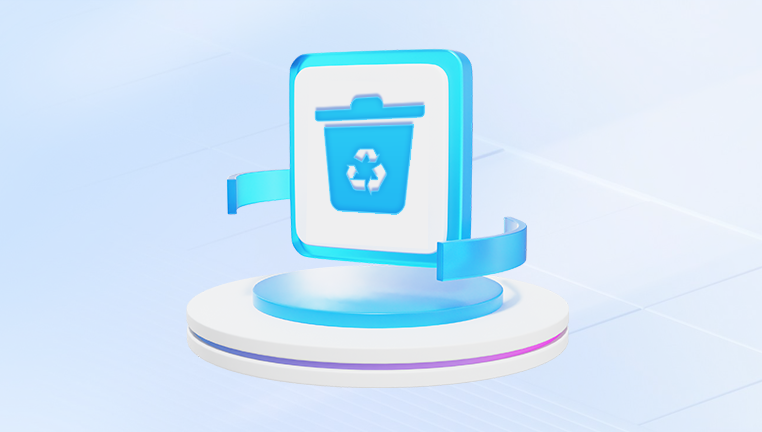When your iPhone is attempting data recovery, it generally means the device is working to retrieve data that may have been lost, corrupted, or otherwise inaccessible. This process can be triggered by various issues, such as software problems, accidental deletions, or hardware malfunctions.
1. IPhone Data Recovery
Data recovery is the process of restoring lost or inaccessible data from storage media. For iPhones, this involves recovering data from the device’s internal storage, which may have become corrupted or damaged. This can include various types of data such as photos, contacts, messages, app data, and more.
2. Common Scenarios Leading to Data Recovery Attempts
a. Software Issues
Software problems can arise from a variety of sources, including:
iOS Updates: Sometimes, after an update, the device may encounter issues that require data recovery.
Crashes or Freezes: These may corrupt data or make it temporarily inaccessible.
Restoring from Backup: If there is an issue during a restore operation, data recovery might be initiated to ensure that no data is lost.
b. Accidental Deletion
You might accidentally delete important files or apps. In such cases, the iPhone may attempt to recover the deleted items from backups or other storage locations.
c. Hardware Failures
Physical damage to the iPhone, such as a broken screen or water damage, can lead to situations where data recovery is necessary. The device may try to retrieve data from damaged components.
d. Malware or Security Issues
Although less common on iPhones due to their security measures, malware or other security threats can sometimes compromise data. Recovery attempts might be made to protect and restore your information.

3. How iPhone Data Recovery Works
a. iCloud Backup Recovery
iPhones often use iCloud to back up data. If you are trying to recover data, the device may attempt to:
Access Recent Backups: Restore data from the most recent iCloud backup.
Rebuild Lost Data: Retrieve information that wasn’t properly saved due to an issue during the backup process.
b. iTunes/Finder Backup Recovery
If you have backed up your iPhone to a computer using iTunes (on Windows) or Finder (on macOS Catalina and later), the recovery process might involve:
Restoring from Backup: Using the backup files stored on your computer to recover lost data.
Fixing Corrupted Backups: Attempting to repair any issues with the backup files to restore data successfully.
c. On-Device Recovery
In some cases, the iPhone itself might attempt to recover data from its internal storage without relying on external backups. This can involve:
Repairing Corrupted Files: Trying to fix corrupted data directly on the device.
Rebuilding Data Structures: Reconstructing file systems or databases that have been damaged.
d. Recovery Software
If standard methods fail, you might use third-party data recovery software designed for iPhones. These tools often work by:
Scanning the Device: Identifying and recovering deleted or lost files from the device’s storage.
Restoring Data: Providing options to recover and export data to a different location.
4. What to Expect During Data Recovery
a. Time and Process
Duration: The time required for data recovery can vary based on the amount of data, the type of recovery being attempted, and the condition of the device.
Status Indicators: You may see progress bars, messages, or other indicators showing the recovery process’s status.
b. Data Integrity
Partial Recovery: In some cases, not all data may be recoverable. This is often due to the extent of damage or corruption.
File Quality: Recovered files may not always be in their original condition. They could be incomplete or corrupted.
5. Preventing Future Data Loss
a. Regular Backups
iCloud Backups: Ensure that iCloud backups are enabled and regularly updated.
Local Backups: Regularly back up your iPhone to a computer using iTunes or Finder.
b. Software Updates
Keep iOS Updated: Regular updates can help prevent software-related issues that might lead to data recovery needs.
c. Protective Measures
Use a Case: Protect your iPhone from physical damage with a sturdy case.
Avoid Water Exposure: Keep your iPhone away from liquids to prevent water damage.
6. Professional Data Recovery Services
In cases where DIY methods fail, or if you suspect hardware damage, professional data recovery services might be necessary. These services can:
Diagnose Issues: Determine the exact nature of the problem with your iPhone.
Recover Data: Use specialized equipment and techniques to recover data that might not be accessible through standard methods.
When your iPhone is attempting data recovery, it’s working to salvage and restore data that might be lost or inaccessible due to various reasons. Understanding the underlying causes and the processes involved can help you manage expectations and take appropriate steps to safeguard your data in the future. Regular backups, timely software updates, and protective measures can significantly reduce the chances of data loss and the need for recovery.
About us and this blog
Panda Assistant is built on the latest data recovery algorithms, ensuring that no file is too damaged, too lost, or too corrupted to be recovered.
Request a free quote
We believe that data recovery shouldn’t be a daunting task. That’s why we’ve designed Panda Assistant to be as easy to use as it is powerful. With a few clicks, you can initiate a scan, preview recoverable files, and restore your data all within a matter of minutes.

 Try lt Free
Try lt Free Recovery success rate of up to
Recovery success rate of up to









